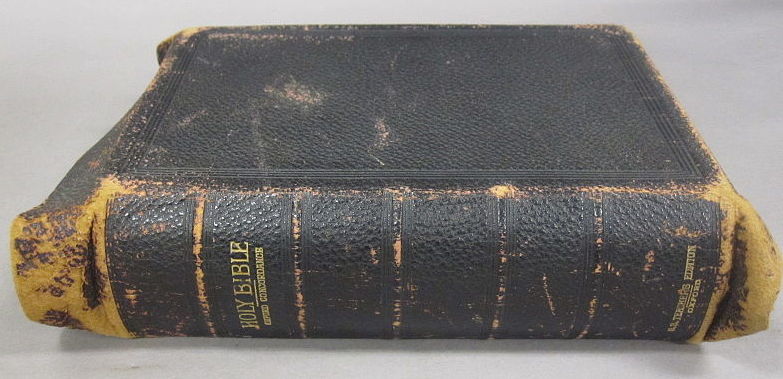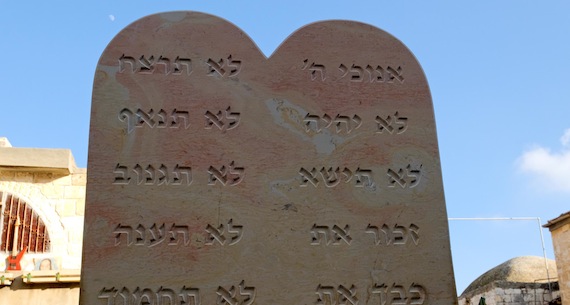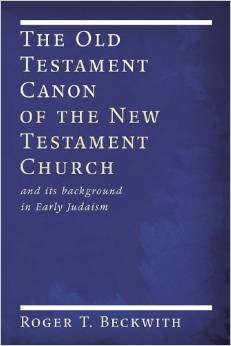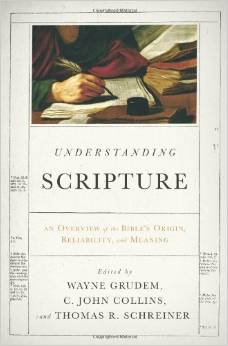How do we know what books of the Old Testament were truly inspired? Although we might take it for granted, the contents of the Old Testament canon have been debated for a long time.

(Photo: By Naval History & Heritage Command from Washington, DC, USA. CC-BY-2.0, via Wikimedia Commons)
The term canon is from a Greek word that means a “rule or “standard,” and it came to represent truth revealed in Scripture.1 For different Christians in different churches, however, the canon represented different books.
- Some people held that the canon extended to encompass all the books read in the church for edification, which would include what is known as the Apocrypha and sometimes even the Pseudepigrapha (a collection of anonymous, apocalyptic writings).
- Others held that the canon represented simply the Jewish Bible, which corresponds to the Protestant Bible of today.2
- In 1546, when the Council of Trent made a formal statement that all who did not accept selected Apocryphal writings should be condemned, Protestants responded with an equally resolute voice.
This disagreement continues. However, it is an issue that needs resolution, for as the theologian Roger Beckwith aptly states, “With no canon there is no Bible.”3
So, how do we know what books go in our Old Testament?
The Concept of the Old Testament Canon
Evangelicals base their beliefs solely on Scripture. And yet, ironically, Scripture was recognized—not determined or chosen—by tradition.
The tradition and authority of the people of God throughout history have attested that there existed a group of writings, divinely inspired and recognizable as such. This group represents the canon.
- The believers between the testaments recognized a known corpus of Scripture, referring to it in their writings with the authoritative phrases, “as it is written” or “according to Scripture” or “it is written.”
- In addition, there are at least twenty-eight documented, separate titles for the Old Testament canon, proving that the individual books had become a collection sufficient enough to warrant titles to the group (canon) as a whole.4
- The Jewish historian Josephus not only understood that a canon existed, but he also listed what he understood that canon to be (Against Apion7f., or 1.37–43). This list mirrors the Jewish and Christian Bibles with the exception of omitting either the Song of Songs or Ecclesiastes.5
- The Jewish community considered this collection canonical, for “the main test of the canonical reception of a book must have been whether or not it was one of those laid up in the Temple”6—and Josephus lists these books as being in the temple.
This evidence reveals the fact that the concept of a canon did indeed exist before the beginning of the Christian era.

(Photo: The 10 Commandments sign on Mount Zion. Courtesy of the Pictorial Library of Bible Lands)
The Contents of the Old Testament Canon
Historical literature reveals the construction of the Old Testament canon in three parts: the Law, the Prophets, and the Hagiographa (meaning “holy writings”).
- Judas Maccabaeus and his associates compiled a list of the Prophets and Hagiographa in 164 BC, at least 250 years prior to the generally assumed date of the closing of the canon (AD 90, at the Council of Jamnia).
- Jesus referred to these three sections of the Old Testament as “the Law of Moses and the Prophets and Psalms” (Luke 24:44). “Psalms” meant the whole Hagiographa, for Christ often referred to Daniel (which was a part of that third section), as well as the book of Psalms itself.
- Philo, a first-century Egyptian Jew, as well as the tenth-century Arabian writer al-Masudi, both referred to the Hagiographa as the “Psalms.”7
How Jesus Viewed the Old Testament Canon
Because the Jews placed the book of Chronicles in the Hagiographa, another statement of Jesus alluded to the three sections as a completed canon:
The blood of all the prophets, shed since the foundation of the world, may be charged against this generation, from the blood of Abel to the blood of Zechariah. —Luke 11:50–51
Jesus’s statement referred to the first of the three sections (Abel in Genesis) and extended to the last of the three sections (Zechariah in 2 Chronicles), implying the inclusion of the second section as well. Christ made the same point by mentioning “all the prophets,” for prophecy was assumed to have ended with the composition of 2 Chronicles, written about 400 BC.

(Photo: Scribe copying Scripture. Courtesy of the Pictorial Library of Bible Lands)
Even though the order of Old Testament books was different for different people, the fact that the books had order, however arranged, reveals that they were recognized as canonical and that the canon was closed at the time of its ordering.
The number of the books also played a vital role.
- The evidence shows that the number of the canonical books was always assumed to be twenty-two or twenty-four.
- The books were the same in both numberings; they were just grouped differently.
So, What about Those Non-Canonical Books?
The books recognized as non-canonical—primarily the books from the Pseudepigrapha and Apocrypha—could not be included in the canon for one reason: their date is much later than the previously attested date of the closing of the canon recognized by Judas Maccabaeus in 164 BC.
- The Pharisees, the Sadducees, and the Essenes all recognized a closed canon and generally saw that prophecy had ceased before the Pseudepigrapha and Apocrypha were written.
- None of the Pseudepigrapha or the Apocrypha were in the canon of the Hebrew Bible, and it was to this canon that Jesus Himself and the apostles appealed.
Confusion comes in for some people because many of the books in question represent impeccable historical sources and are true in what they say.
But true history does not necessarily constitute a place in the canon.
The Bottom Line
For those of us who believe the Old Testament contains all the books it needs to contain, history offers comfort and assurance. The study of canonicity should awaken a deepening devotion to the Scriptures God has seen fit not only to reveal to us, but also to uphold and confirm through many different agents.
Tell me what you think: Why do you believe the books in your Bible are all God wanted us to have? To leave a comment, just click here.
a longer version of this post.
Here are a couple of posts on related subjects you will enjoy:
Also, here are a couple of excellent resources that will take you further—and much further—in these issues of biblical backgrounds and canonicity.
1. Walter Bauer and others, eds., A Greek-English Lexicon of the New Testament and Other Early Christian Literature, 2d rev. ed. (Chicago: University of Chicago Press, 1979), 403.
2. Roger Beckwith, The Old Testament Canon of the New Testament Church (Grand Rapids: Eerdmans, 1985) 2.
3. Beckwith, 5.
4. Beckwith, 105–107.
5. Beckwith, 80.
6. Beckwith, 86.
7. Beckwith, 111–112.


